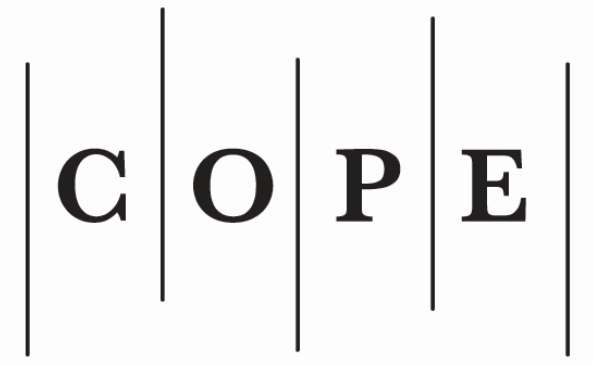An Empirical Study of IT Innovation Adoption Among Small and Medium Sized Enterprises in Klang Valley, Malaysia
##plugins.themes.bootstrap3.article.main##
Abstract
Purpose—The purpose of this research is to use and validate the Entrepreneurial Event model as a base model to investigate SME owners’ perception toward IT innovation adoption and use. This paper also attempts to investigate the key determinants of the adoption of IT innovation among small and medium sized enterprises in Kuala Lumpur, Malaysia. This study revised and validated the Entrepreneurial Event Model in a new context and tried to examine the effect of perceived desirability, propensity to act and performance expectancy on behavior intention to adopt and use IT innovation in SMEs companies.
Design/ methodology/ approach—Based on the research model the questionnaire was developed using previous work in the areas of entrepreneurship (Entrepreneurial Event Model) and technology acceptance (UTAUT). The data used to test the hypothesis is collected from various spectrums of Malaysian industries in Kuala Lumpur. A total of 1,000 businesses were identified and 412 completed questionnaires were available in this study. The research model was applied using the structural equation modelling technique.
Finding—The results of this study indicated that perceived desirability, propensity to act and performance expectancy have a significant positive influence on behavioral intention, and explained a significant amount of the variance in predicting a SMEs owners intention to adopt IT innovation. Propensity to act is the strongest determinant of intention to use IT innovations among Malaysian SME owners follow by perceived desirability and performance expectancy. The results suggest that attractiveness of IT innovation is an important determinant towards the intention to adopt IT innovation. The result revealed that SME owners are more willing to use IT innovation, which is more attractive. Perceived usefulness (performance expectancy) of IT innovation is the third most important factor that SME owners consider when they want to adopt and use new technology in their jobs. The results also revealed that experience moderated the relationship between determinants and behavior intention.
Research Limitations/implications—The number of male and female SMEs owners is not equal and our respondents were mostly men compared to women. This study measure intention to use IT innovation, and did not measure use behavior.
Practical implications—This study extends to knowledge on IS adoption behavior research by using entrepreneurial event models in the context of technology acceptance. Furthermore, from the SME owners’ points of view, this study has shed some light on the adoption and use behavior and clarified the situation for SME owners when they want to adopt and use IT innovation to be successful in their job and market. Originality/value—This study is one of the first to utilize the Entrepreneurial Event Model (EPM) to the technology acceptance domain. It also provides a broader view of the IT innovation adoption decision and sheds some additional light on individual technology usage behavior.
Design/ methodology/ approach—Based on the research model the questionnaire was developed using previous work in the areas of entrepreneurship (Entrepreneurial Event Model) and technology acceptance (UTAUT). The data used to test the hypothesis is collected from various spectrums of Malaysian industries in Kuala Lumpur. A total of 1,000 businesses were identified and 412 completed questionnaires were available in this study. The research model was applied using the structural equation modelling technique.
Finding—The results of this study indicated that perceived desirability, propensity to act and performance expectancy have a significant positive influence on behavioral intention, and explained a significant amount of the variance in predicting a SMEs owners intention to adopt IT innovation. Propensity to act is the strongest determinant of intention to use IT innovations among Malaysian SME owners follow by perceived desirability and performance expectancy. The results suggest that attractiveness of IT innovation is an important determinant towards the intention to adopt IT innovation. The result revealed that SME owners are more willing to use IT innovation, which is more attractive. Perceived usefulness (performance expectancy) of IT innovation is the third most important factor that SME owners consider when they want to adopt and use new technology in their jobs. The results also revealed that experience moderated the relationship between determinants and behavior intention.
Research Limitations/implications—The number of male and female SMEs owners is not equal and our respondents were mostly men compared to women. This study measure intention to use IT innovation, and did not measure use behavior.
Practical implications—This study extends to knowledge on IS adoption behavior research by using entrepreneurial event models in the context of technology acceptance. Furthermore, from the SME owners’ points of view, this study has shed some light on the adoption and use behavior and clarified the situation for SME owners when they want to adopt and use IT innovation to be successful in their job and market. Originality/value—This study is one of the first to utilize the Entrepreneurial Event Model (EPM) to the technology acceptance domain. It also provides a broader view of the IT innovation adoption decision and sheds some additional light on individual technology usage behavior.
##plugins.themes.bootstrap3.article.details##
Section
Articles
- The Author grants to the Publisher the exclusive right and licence to publish this Article without remuneration until the expiry of the economic rights: to reproduce the article in print and digital form, including its publication; to disseminate the original version of the Article or its copies in Lithuania and foreign countries; to translate the Article; to publish the article, including making it publicly available via computer networks; to reproduce and publish the Article in Lithuanian and foreign databases; to licence usage of the Article in ways described in this paragraph.
- The Author warrants that the economic rights of the Author have not been assigned or granted to third parties, that the Article has not been published so far and is not under consideration of being published elsewhere.
- The Author warrants that the Article does not violate intellectual property rights of others.
- After the Article is published in Social Technologies the Author shall have a right to make it public on personal website or on a website of an institution of affiliation, to reproduce it for non-commercial teaching or scholarly research purposes, clearly indicating that the primary source of its publication is Social Technologies.
- This consent shall be considered invalid if the Editorial Board of the Social Technologies decides not to publish the Article.
Authors contributing to Social Technologies agree to publish their articles under a Creative Commons Attribution 3.0 Unported (CC BY 3.0) Licence, allowing third parties to share their work (copy, distribute, transmit) and to adapt it, under the condition that the authors are given credit, and that in the event of reuse or distribution, the terms of this licence are made clear.







